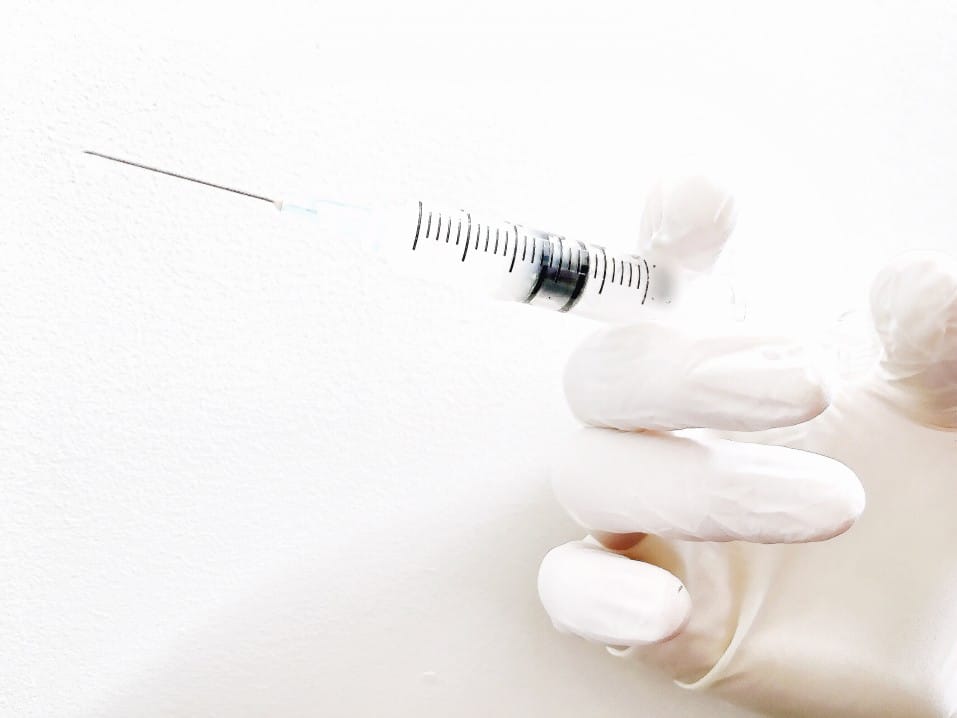

Can Caudal Epidural Injection Help Me?
The epidural space is a passageway for spinal nerves that carry signals from the brain to the legs. Back pain is caused by the inflammation of these nerves in the lower back.
A caudal epidural injection is inserted into the lower section of the epidural region to relieve low back pain and inflammation in the lower extremities.
The epidural space
The epidural space is the part amid the dura mater (a membrane) and the vertebral wall, comprising of fat and small blood vessels. The area is situated just outside the dural sac which surrounds the nerve roots and is filled with cerebrospinal fluid.
This is where the nerve roots are located, and the procedure occurs if the nerves become damaged or inflamed.
Causes of inflammation
They may include
- Herniated disks (slipped disks)
- Degenerative disk disease:
- Sciatica (irritation, inflammation, pinching, or compression of a nerve in the lower back)
- Narrowing the spinal canal, known as Spinal Canal Stenosis
- Postlaminectomy syndrome (chronic back pain after back surgery)
- Osteophytes (bone spurs) in the back
Caudal Steroid Injection
This is the injection of an anesthetic to reduce pain and a steroid to reduce inflammation in the epidural space.
They may be used to treat both long-term and short-term pain. It is becoming more popular because it takes just a few minutes and has a very high success rate.
Steroidal injections have also been shown to increase neuronal membrane stability and reduce ion conduction. Both methods reduce pain.
The process works well for some patients, although some may have to repeat it over a year if it only provides temporary pain relief.
How to Prepare for a Caudal Epidural Injection
It's essential to properly prepare for your treatment and understand what to expect throughout the procedure is completed. Remember, always talk to your doctor about any concerns you have.
Pre-treatment
The patient should inform their physician about any allergies and current medication.
Some medications might be necessary to stop before the procedure to reduce the risk of complications during or after it.
The patient must arrange some form of transport home as you will not be advised to drive after the procedure.
Procedure

The patient lies on an x-ray table where a fluoroscopy x-ray guides the needle to the epidural space.
After thoroughly cleansing the injection site, the physician anesthetizes it. An injection is administered to access the epidural area via a tiny incision above the buttock crease.
Using live x-ray guidance, the doctor will place the needle in the right spot and then injects a contrast dye to make sure the drug gets to the nerves that are being impacted.
Next, the doctor injects a mix of numbing drugs and time-released anti-inflammatory medication into the patient's body.
Post-treatment
The procedure may take between 15 and 30 minutes to complete as an outpatient operation.
Avoid vigorous physical activity after the injection. After the caudal epidural injection, there may be some bruising or bleeding, as well as mild migraines.
The patient may experience increased pain over a few days, but it occurs as the numbing medicine wears off.
There may experience numbness down the leg as some of the injected anesthetics can pool in the sacrum affecting your nerves.
Most people experience back pain relief within 2-3 days following the treatment, but it may take up to 10 days for some.
After 24 hours, you may go back to your regular routine. Try to avoid doing anything strenuous for the first two weeks and gradually build up your activity level.
The Side Effects and Risks of Caudal Epidural Injections

While there are advantages to receiving caudal epidural injections, such as its non-surgical approach to managing pain and opening up possibilities to different treatment techniques such as physiotherapy, the risks must also be considered.
Any injection treatment comes with its own set of risks, and this is something that may happen with your caudal epidural injection. Most of the adverse effects are temporary, and the patient can cope with them.
There are very few examples of significant adverse reactions, but they sometimes happen.
It doesn't work. It is frustrating to go through the treatment to have the pain return after a few weeks.
The physician performing the treatment must use extreme caution so that the patient is not harmed. The spinal column is the nerve-conducting core of the body's neurological system, which means any issues might be quite painful.
Because the needle skips nerve clusters, patients are likely to experience some amount of discomfort throughout the treatment, despite being under anesthetic. Before the surgery, sedation may be necessary for a more apprehensive patient.
After an injection
The adverse effects are typically mild and do not require medical attention. The patient might experience:
- Dizziness
- Headache
- Nausea
- Redness of the face and a feeling of warmth
When there is a sudden spike in heart rate and blood pressure, it might cause fainting due to the anxiety associated with the surgery.
Injection site pain or swelling
Pain at the injection site may be reduced by placing an ice pack over the region.
Serious complications
These are very uncommon. However, they may occur after a caudal epidural injection, so it's important to be aware of the implications and know when to raise such issues to your professional.
Bleeding
During the procedure, damage to the arteries may cause localized internal bleeding within the epidural space, soft tissues, or the spinal cord membranes.
A hematoma (blood clot) may form within the damaged artery, causing decreased blood flow to vital areas such as the brain or the spinal cord.
Infection
Infections may occur within the body and affect the brain, spinal cord, or both. The injection site itself may be the source of the problem.
It may be caused by microbes on the patient's skin. Puss forms in the epidural area, causing pain and inflammation.
Brain and spinal membranes become inflamed, leading to meningitis. A spinal bone or disc infection is the source of osteomyelitis or discitis.
As a result of the injection, the soft tissue surrounding the injection site becomes infected.
Dural puncture
Using a needle, it is possible to pierce the spinal column's membranes (meninges). Cerebrospinal fluid, CSF leaks as a result of this condition.
This leads to a decrease in CSF pressure in the brain, causing dizziness, migraines, or vision loss.
Nerve damage
There are many nerves around the injection area, and if one of them is damaged by the needle, it may lead to severe conditions.
It is easy to miss as a local anesthetic is used, and the patient may go for days without knowing there was some nerve damage. Serious side effects may be avoided if the condition is caught early and addressed.
Numbness, burning, or even numbness loss may occur due to nerve injury.
After the treatment, patients are monitored for an hour to check for nerve damage.
Platelet-rich plasma (PRP) injection
This form of regenerative medical treatment uses the patient's blood to accelerate healing and alleviate pain caused by injuries.
It is possible to provide caudal epidural injections without significant amounts of steroids.
Procedure
It is a minimally evasive method of epidural corticosteroid injections where the body's natural healing factor is used.
Blood is collected from the patient and spun down in a centrifuge to separate the various components of the blood, resulting in a concentrated serum that is high in platelets. Platelets are rich in growth factors and other substances that speed up the body's natural healing.
The serum is then directly injected into the injured area under the right imaging. This procedure is similar to steroidal injections.
Benefits
The procedure employs a natural healing process that avoids the negative effects of steroid injections.
These include but are not limited to increased blood sugar, increased blood pressure, osteoporosis, and weight gain.
Pain management alternatives

Depending on the severity of the discomfort, the doctor may offer other treatment choices. These include:
Cryotherapy and Thermotherapy
Cryotherapy, often known as "cold therapy," is a technique that includes applying ice packs, cold water, or a chemical cold pack to a wounded location to restrict blood flow to the area and numb tissues.
It replicates a local anesthetic by lowering nerve stimulation resulting in less information transmission to the brain. It also has the additional benefit of minimizing edema in a region and tissue damage by decreasing blood flow to the area.
The use of heat treatment, also known as thermotherapy, comprises a hot water bottle or heating pads to widen blood vessels, increase blood flow, and relax tense muscles.
On the other hand, this approach is not recommended for swollen or painful regions since it increases blood flow and nerve stimulation, resulting in greater sensitivity to pain.
The use of heat and cold treatments may be varied to help the patient achieve a more comfortable posture or state of mind.
However, if you have just received a caudal epidural injection, heat should not be applied to the area; instead, you should stick to cryotherapy.
Massage therapy
When doing mobility exercises, an injury to the iliolumbar ligament(link) generates discomfort. For example, pain while bending left indicates that a ligament on the right side has been damaged and strained.
The ligament is treated with friction therapy, followed by a massage of the lower back and hip.
Injuries to the attachment point of the transverse processes make massage treatment difficult since they are out of reach, but thankfully, these injuries are infrequent in the general population.
Physical therapy
Some special exercises may also be given to put the ligament under some tension, thereby strengthening it. The exercises may include stretches that become progressively easier for the patient as the iliolumbar ligament heals.
The simple act of walking is underrated and often disregarded as a type of exercise. However, it provides relatively low pain mobility while at the same time training the supportive ligaments. It may be painful at first, especially rotating laterally, but it gets easier as the damaged ligament heals.
FAQS:
How often do I need a caudal epidural injection?
Some people experience pain relief after one shot, but you may be given up to two more injections to increase its efficiency if you still have pain. You should not get more than three shots in a year.
When should I call a doctor after a caudal epidural injection?
If the back pain hasn't reduced after two weeks, you may have to call your doctor for a follow-up appointment. A different medication may prove effective after that.
The doctor may also recommend other pain relief methods mentioned above in detail, such as:
1. Massage therapy
2. Hot and cold treatment
3. Physical therapy
4. Muscle relaxants
5. Surgery such as a laminectomy
6. Non-steroidal anti-inflammatory medications
Unless you have a doctor's permission, you should not drive for at least 24 hours.
How often do I need a caudal epidural injection?
Some people experience pain relief after one shot, but you may be given up to two more injections to increase its efficiency if you still have pain. You should not get more than three shots in a year.
What shouldn't I do after a caudal epidural injection?
It would be best if you steered clear of applying heat directly to the injection site. However, a conventional shower is also an option.
Wait till the following day to take a hot tub soak or go swimming.
What medications should I avoid taking before having a caudal epidural injection?
It is not recommended to use non-steroidal anti-inflammatory medicines (NSAIDs) since they harm platelet function in the blood.
Platelets play an important part in the coagulation of blood, and they may interfere with the clotting process.
Would you like to know more about Caudal Epidural Injection?
We urge you to contact Atlas Pain Specialists if you reside in the Phoenix region and have questions about Caudal Epidural Injection. Make a same-day appointment now! We will carefully review your injuries and medical records to identify the best course of action for relieving your pain and regaining your mobility.
About Dr. Sean Ormond



